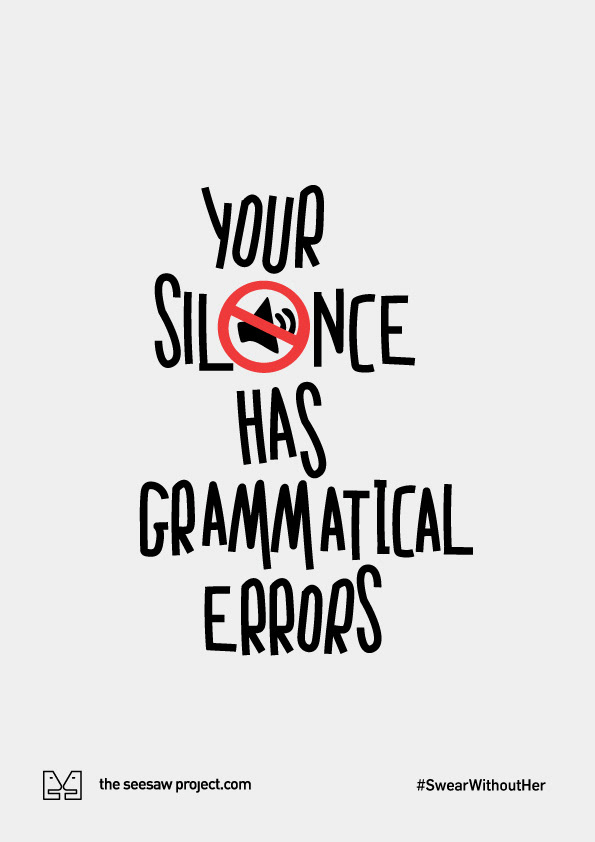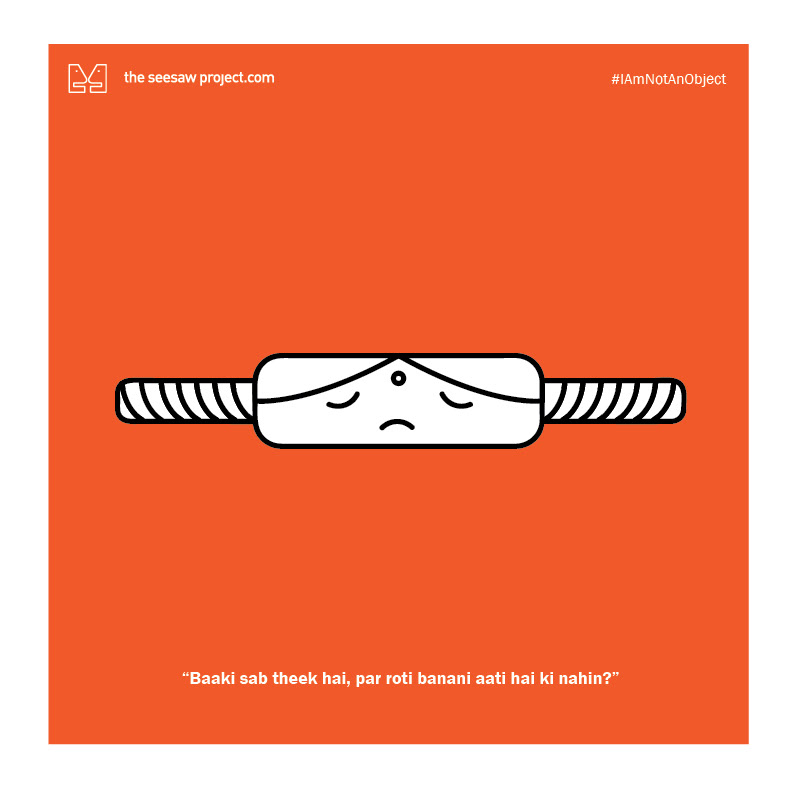

The project aims to sensitise people against negative gender stereotypes in everyday life
We live in complex times, on one hand we are fully aware of gender bias through terms such as ‘toxic masculinity,’ ‘objectification,’ ‘rape culture,’ ‘sexist language,’ ‘feminism,’ on the other hand, we are also simply willing to ignore how this prejudice permeates our daily life. The Seesaw Project was created taking cue from the problematic way in which India deals with gender bias. The aim of this project is to use design, painting, photography, music and short-films so that it can provoke thought enough to start a conversation on the subject. Since they came into being two years ago, the project has tackled subjects such as sexist language #SwearWithoutHer, toxic masculinity #DontBeAMan and objectification of women #IAmNotAnObject
sbcltr caught up with the people behind the project to understand more about their work, where they come from and what are they working on next. Read the excerpts below.
How did you come up with the idea for Seesaw and how did it come to fruition?
Our country has the world’s largest youth population. But it also has one of the world’s highest female infanticide rates. We are among the few countries to have been led by a female Prime Minister decades ago. But we still condemn the birth of a girl child. The media is abuzz as manic competition drives our youth to depression. But we insist on reprimanding a boy who dares to shed a tear.
None of this felt right. Just like it didn’t feel right to do nothing about it. And that prompted the creation of The Seesaw Project. To help simplify the complexities of gender equality through a language everyone understands—art. 
Tell us about your team.
The team consists of three individuals who feel very passionately about the topic. They include:
Sakshi Choudhary
Sakshi’s perfect world was jolted when she realised women were often defined by their gender rather than their abilities. And a society deeply rooted in patriarchy was holding them back from realising their true potential. An innate desire to change the narrative combined with her background in communication, gave birth to The Seesaw Project. A year and three series on, Sakshi continues to believe that no matter how daunting the numbers, change is possible.
Jnana Prasanna Kumar Sarvasiddi (JPAX)
As a young boy, Jpax was deeply affected by how India treated its women. He waged a solitary war against society but wasn’t making much headway. So when Sakshi reached out to him with the idea of The Seesaw Project, he didn’t think twice. Blessed with extraordinary design sense, Jpax took the project from a thought in the head to reality. He believes the power of design has not been used enough to address social issues. And that’s what he’s determined to change.
Burzin Mehta
Burzin believes there’s no such thing as ‘a man’s job’. Raising a daughter in a man’s world has taught him that nobody has the right to deny her an equal chance. While life has taught him that a woman can do everything a man can. Which is why he finds it hard to figure why women aren’t as much a part of running the world, as men. He sees every series that The Seesaw Project releases as one tiny step in setting right that rather unnecessary wrong.
 How have people responded to your art so far?
How have people responded to your art so far?
The response has been very encouraging. Not only have we received enormous support from like-minded people across the country, we’ve also been covered by several independent publications, blogs and websites. We’ve also received requests from creative minds in India and overseas to contribute towards the project.
Are you only focused on making posters or does the future also involve some kind of merchandising?
The future definitely involves using media other than digital posters. While we’d love to have TSP merchandise, the focus right now is on tackling as many different issues as possible.
So far you’ve made art on sexist language, toxic masculinity and objectification of women, how do you choose your topics and what is it that you’re working on next?
Feminism has become a misunderstood term. With every topic we hope to demystify one aspect of the problem. In the hope that it changes not only one’s understanding but also one’s attitude towards the subject at large. The topic we’re currently working on is marital rape, because although it is a criminal offence in most countries, India still believes it’s fine for a man to force his wife into having sex without her consent.